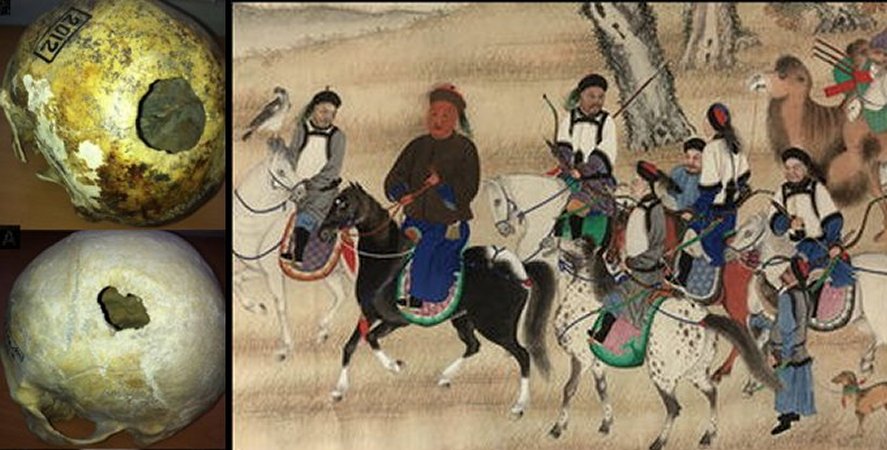Siberia Had A Major Skull Surgery Center 2,500 Years Ago
Conny Waters - AncientPages.com - When did people in Siberia perform sophisticated ancient cranial surgery?
There is evidence advanced medical practices were conducted in Siberia a very long time ago. Ancient nomads of Siberia created a major skull surgery center about 2,300–2,500 years ago.
For thousands of years, numerous ancient cultures flourished and disappeared in the Altai region, Siberia. Archaeologists excavating the ancient burial complexes of the Pazyryk culture that existed in the Altai region about 2,500 years ago through the end of 600 BC to the beginning of 200 BC discovered several skulls that offer evidence of sophisticated ancient surgical technologies.
The traces of complex manipulations on human skulls performed by ancient healers indicated that improvement of the human body apparently was an important aspect of the Pazyryk people’s worldview.
The term trepanation is commonly understood as a surgical intervention when a piece of skull bone of a living individual is removed without any damage to the underlying blood vessels, meninges, and brain. “Trepanning” means making a hole and exposing the intra cranial contents of a human skull Trepanation can have medicinal or ritual purposes.
The Pazyryk cranial collection consists of 153 skulls, 3 of which have evidence of intravitam trepanations. These 3 skulls were carefully examined.
One of the male patients had a blood clot from head trauma that most likely caused him to suffer from nausea, headaches, and other symptoms. It’s believed that trepanation was used to remove the clot. The skull shows bone growth after the surgery, meaning the man lived for many years afterward.
See also:
Ancient Egyptians Had The First Governmental Health Care System
Why Did Socrates Drink Poison And Commit Suicide?
Beer Was Used As Medicine And Payment In Ancient Egypt
The second male skull suggests the surgeon was trying to repair a congenital skull deformity. With both of these men, the surgeons made a small hole where they could get to the brain with minimal damage to the membrane and joints.
The third skull belongs to a woman who showed trauma from a fall. Unfortunately, she did not survive her surgery because her doctor made mistakes. In ancient times, the choice of surgeon was critical.
The actual scraping tool was not found at the site, but archaeologists suspect it was a bronze knife.
Written by Conny Waters – AncientPages.com Staff Writer
Copyright © AncientPages.com All rights reserved. This material may not be published, broadcast, rewritten or redistributed in whole or part without the express written permission of AncientPages.com
More From Ancient Pages
-
 Mysterious Pyramid Of Menkaure Remains An Ancient Puzzle
Civilizations | Oct 8, 2022
Mysterious Pyramid Of Menkaure Remains An Ancient Puzzle
Civilizations | Oct 8, 2022 -
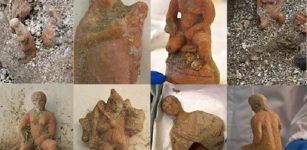 13 Ancient Terracotta Figurines Associated With Cybele And Attis Unearthed In Pompeii
Archaeology | Dec 28, 2023
13 Ancient Terracotta Figurines Associated With Cybele And Attis Unearthed In Pompeii
Archaeology | Dec 28, 2023 -
 More Evidence Linked To Enigmatic Laodicea Temple In Nahavand Found By Iranian Archaeologists
Archaeology | Aug 7, 2020
More Evidence Linked To Enigmatic Laodicea Temple In Nahavand Found By Iranian Archaeologists
Archaeology | Aug 7, 2020 -
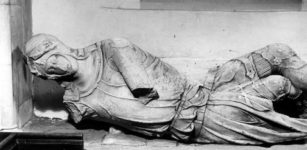 Aldworth Giants: Knights Who People Tried To Erase From History
Featured Stories | Jul 2, 2015
Aldworth Giants: Knights Who People Tried To Erase From History
Featured Stories | Jul 2, 2015 -
 What Happened To The Staircase In The Temple Of The Goddess Hathor?
Civilizations | Mar 9, 2017
What Happened To The Staircase In The Temple Of The Goddess Hathor?
Civilizations | Mar 9, 2017 -
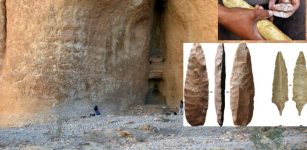 Independent Invention: Iconic Native American Stone Tool Technology Discovered In Arabia
Archaeology | Aug 6, 2020
Independent Invention: Iconic Native American Stone Tool Technology Discovered In Arabia
Archaeology | Aug 6, 2020 -
 Ancient Irish Games Hurling And Curling Were Forbidden In 1366 By The Englishmen
Ancient History Facts | Jul 23, 2016
Ancient Irish Games Hurling And Curling Were Forbidden In 1366 By The Englishmen
Ancient History Facts | Jul 23, 2016 -
 Shiva – Hindu God Who Resides In Every Being And In All Things
Featured Stories | Apr 8, 2019
Shiva – Hindu God Who Resides In Every Being And In All Things
Featured Stories | Apr 8, 2019 -
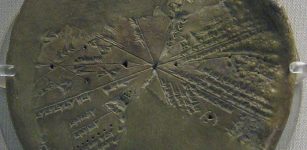 Assyrian King Ashurbanipal’s Great Library With Thousands Of Cuneiform Tablets
Civilizations | Dec 9, 2015
Assyrian King Ashurbanipal’s Great Library With Thousands Of Cuneiform Tablets
Civilizations | Dec 9, 2015 -
 Dinosaurs Were On The Up Before Asteroid Downfall – Study Finds
Archaeology | Dec 8, 2022
Dinosaurs Were On The Up Before Asteroid Downfall – Study Finds
Archaeology | Dec 8, 2022 -
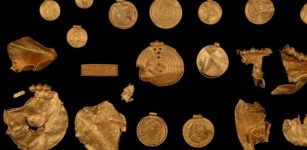 3D Scan Will Uncover Secrets Of The Magnificent Vindelev Gold Treasure
Archaeology | Oct 25, 2023
3D Scan Will Uncover Secrets Of The Magnificent Vindelev Gold Treasure
Archaeology | Oct 25, 2023 -
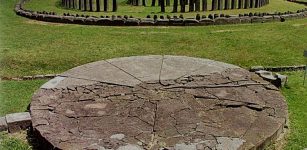 Sarmizegetusa And Its Andesite Sun Artifact Similar To The Mayan Calendar
Artifacts | Apr 13, 2021
Sarmizegetusa And Its Andesite Sun Artifact Similar To The Mayan Calendar
Artifacts | Apr 13, 2021 -
 Takshashila: Renowned Learning Center That Attracted Buddhist Masters, Disciples And Students Of The World
Featured Stories | Sep 13, 2021
Takshashila: Renowned Learning Center That Attracted Buddhist Masters, Disciples And Students Of The World
Featured Stories | Sep 13, 2021 -
 Tomb Of Last Ruler Of A Sunken Kingdom Remains An Ancient Mystery
Featured Stories | Mar 24, 2021
Tomb Of Last Ruler Of A Sunken Kingdom Remains An Ancient Mystery
Featured Stories | Mar 24, 2021 -
 Yungang Grottoes: Marvellous Example Of Ancient Buddhist Rock-Cut Architecture
Civilizations | Sep 10, 2015
Yungang Grottoes: Marvellous Example Of Ancient Buddhist Rock-Cut Architecture
Civilizations | Sep 10, 2015 -
 Legend Of Tarenyawagon Who Came From The Heavens And Ascended To The Stars In His Fast Flying Shining Canoe
Featured Stories | Feb 25, 2019
Legend Of Tarenyawagon Who Came From The Heavens And Ascended To The Stars In His Fast Flying Shining Canoe
Featured Stories | Feb 25, 2019 -
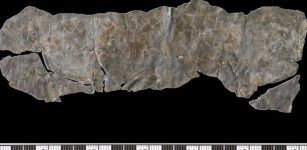 Intriguing Connection Between Ancient Curse Tablets And The Book Of Revelation Discovered
Artifacts | Feb 9, 2023
Intriguing Connection Between Ancient Curse Tablets And The Book Of Revelation Discovered
Artifacts | Feb 9, 2023 -
 Art Historians Solve Mystery Of Raphael’s Tomb By Reconstructing His Face
Archaeology | Aug 7, 2020
Art Historians Solve Mystery Of Raphael’s Tomb By Reconstructing His Face
Archaeology | Aug 7, 2020 -
 Unique Sword Casts New Light On Viking Voyages Across The North Sea
Archaeology | Jul 18, 2022
Unique Sword Casts New Light On Viking Voyages Across The North Sea
Archaeology | Jul 18, 2022 -
 Hundreds Of Fascinating 24,000-Year-Old Cave Paintings Discovered In Eastern Iberia
Archaeology | Sep 11, 2023
Hundreds Of Fascinating 24,000-Year-Old Cave Paintings Discovered In Eastern Iberia
Archaeology | Sep 11, 2023

